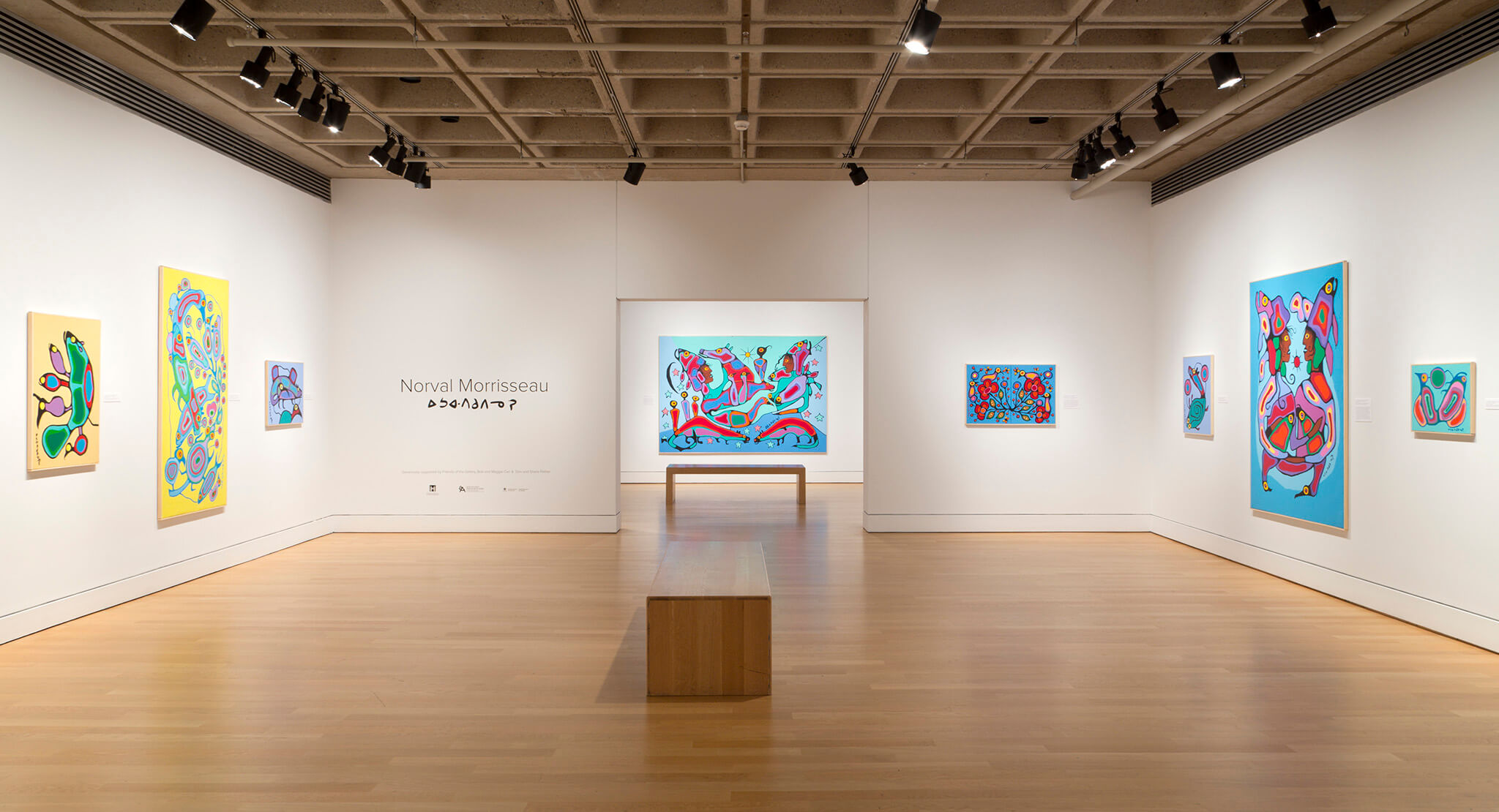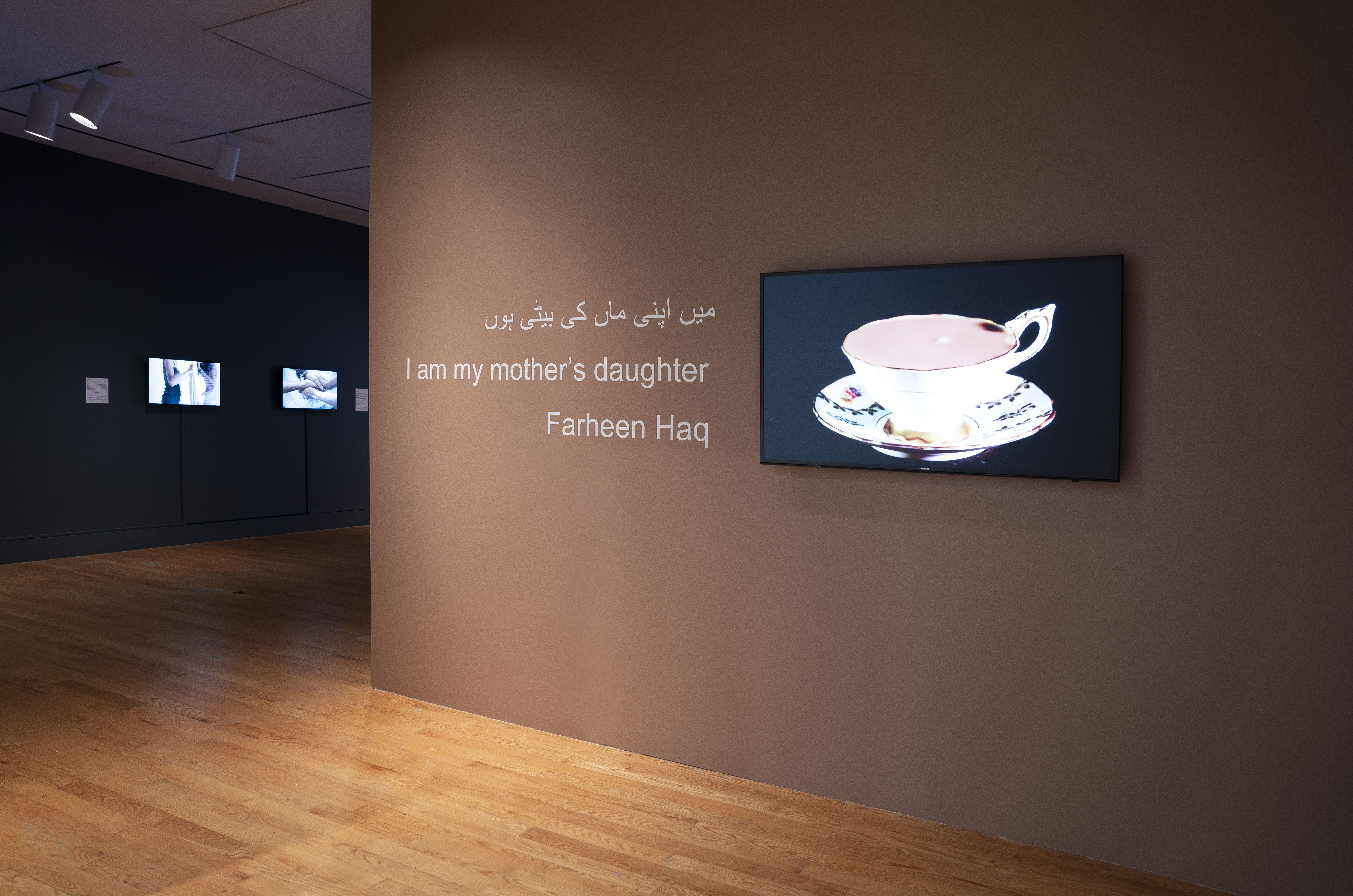During the 1980s, celebrated Anishinaabe artist Norval Morrisseau (1931–2007) painted animated scenes of animals, plants, fish, Anishinaabe figures, and other forms of creation living harmoniously on the astral plane. These pictures represent the astonishing visions the self-professed shaman artist experienced during his travels beyond the earthly realm. The exhibition Norval Morrisseau here at the Art Gallery of Hamilton explores Morrisseau’s role as a shaman artist whose visions encourage positive environmental and cultural change based on the traditional Anishinaabe values of respect, reciprocity, relationships, and responsibility.
RESPECT
The Anishinaabeg understand respect as the recognition that all of creation is spiritually connected. In Children with Tree of Life (ca. 1980–85) (fig. 1), bears and birds have gathered around three Anishinaabe children as they study a tall, blossoming plant. Gazing at the tree of life, the children are practicing silent observation. Silence encourages looking and listening to the natural world, which in turn fosters spiritual connections.[i]
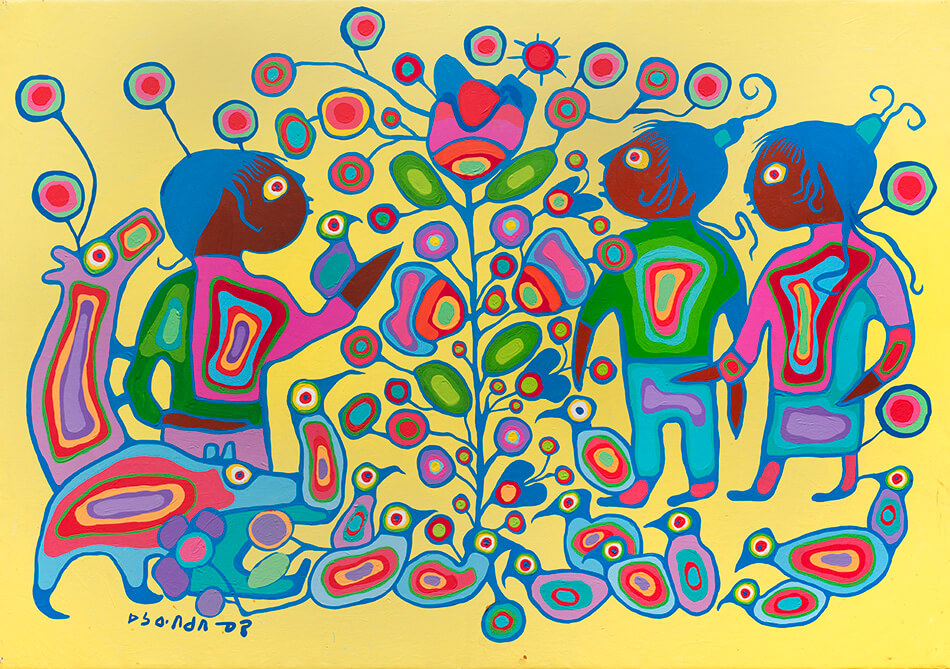
RECIPROCITY
Reciprocity between living beings is defined as the practice of exchanging things with others for mutual benefit and is fundamental to achieving a balanced and sustainable environment. Inspired by symbiotic relationships in nature, Morrisseau’s lively Floral Theme in Two Parts (ca. 1980–85) (fig. 2) is a symmetrical diptych of purple and yellow birds resting on a plant bearing red flowers and berries as butterflies flutter in the air. Morrisseau’s use of symmetry and complementary colours creates a strong sense of balance in this work.
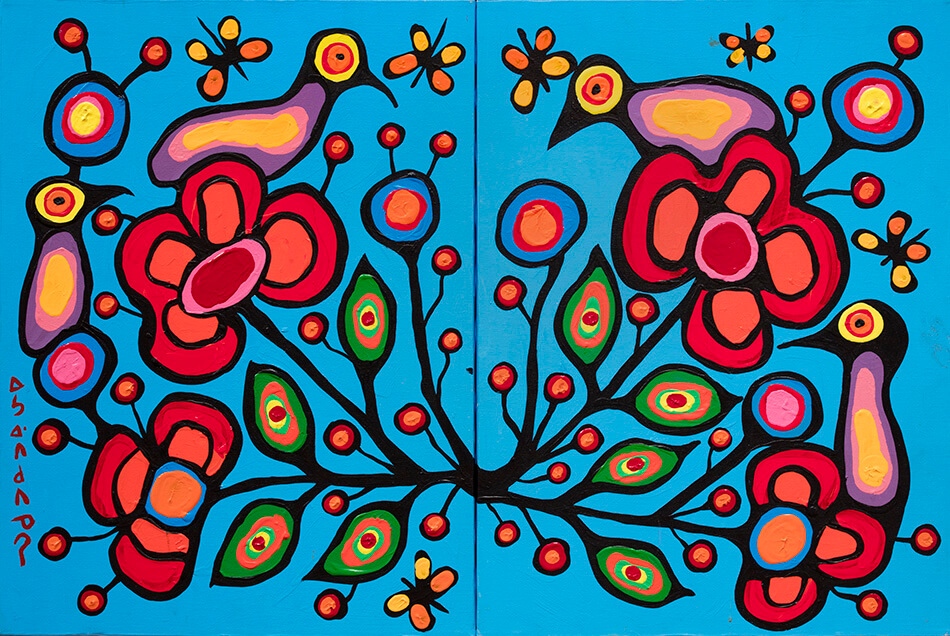
RELATIONSHIPS
The traditional value of relationships speaks to the interconnectedness of all creation.[ii] The Anishinaabeg express their holistic understanding of the world through the motif of the circle, which often appears in Morrisseau’s work. Life Cycle (ca. 1980–85) (fig. 3) shows an intimate gathering of spirit animals connected both physically and through communication lines. Forming an all-encompassing circle, the communication lines illustrate that all living beings are responsible for maintaining relationships with each other as they journey through the cycle of life together.
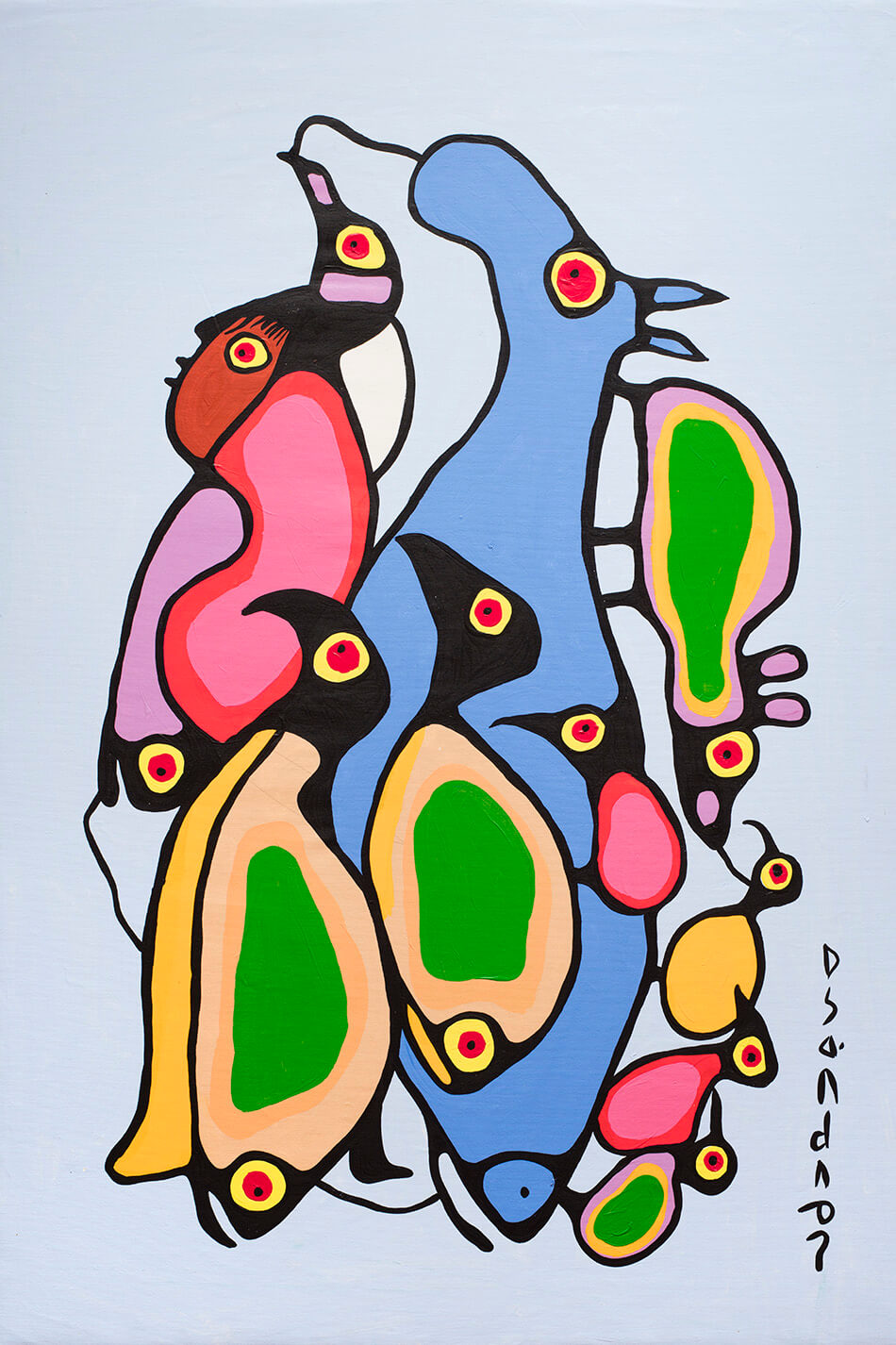
RESPONSIBILITY
Within the Anishinaabe tradition, responsibility means using one’s gifts and abilities to benefit the entire community and the earth.[iii] Traditional Anishinaabe education fosters this cultural value through role modelling and oral teaching.[iv] Shaman and Apprentice (ca. 1980–85) (fig. 4) depicts two spirit figures facing each other as they float in a serene, celestial space. The apprentice on the right is watching the shaman demonstrate his remarkable powers of transformation. This painting reinforces the importance of imparting knowledge to younger generations.[v]
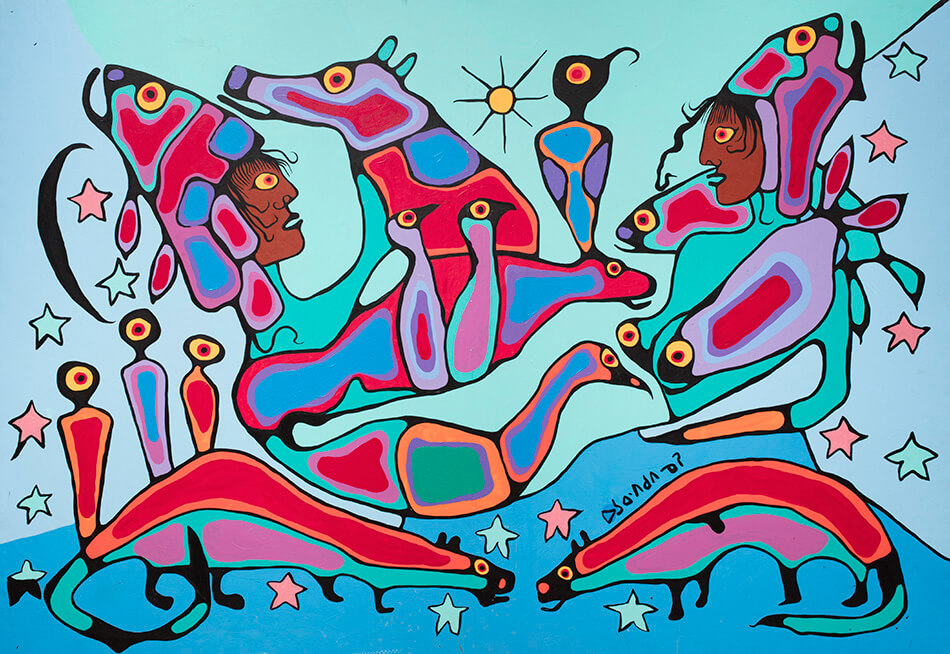
Fostering traditional Anishinaabe values, Morrisseau’s art invites us to imagine, and to transform into reality, visions of a more balanced and sustainable world—one that supports the transmission of Indigenous knowledge, the quality of life of present and future generations, as well as Indigenous rights, identity, and cultural practices.
We invite you to come to see Norval Morrisseau before the exhibition closes on March 17, 2019! Admission is free courtesy of Orlick Industries. Visit Plan Your Visit for Gallery hours and directions.
See Acting Associate Curator Tara Ng speak about our Norval Morrisseau exhibition in the video below:
[i] Lawrence Gross, Anishinaabe Ways of Knowing and Being (London; New York: Routledge, 2016), 63–64.
[ii] Nicole Bell, “Anishinaabe Bimaadiziwin,” in Contemporary Studies in Environmental and Indigenous Pedagogies: A Curricula of Stories and Place, ed. Andrejs Kulnieks, Dan Roronhiakewen Longboat, and Kelly Young (Rotterdam: SensePublishers, 2013), 99.
[iii] Ibid., 102.
[iv] Ibid., 90–91.
[v] Carmen Robertson, Mythologizing Norval Morrisseau: Art and the Colonial Narrative in the Canadian Media (Winnipeg: University of Manitoba Press, 2016), 89–90.
